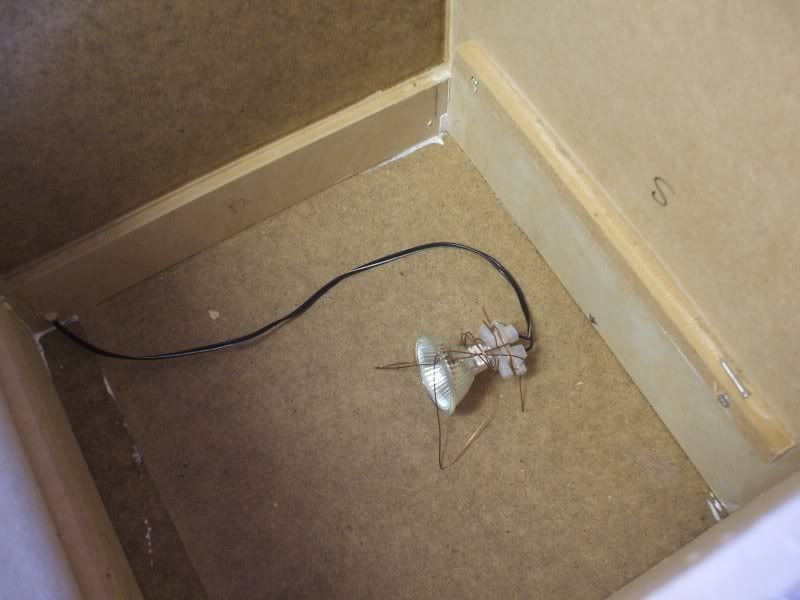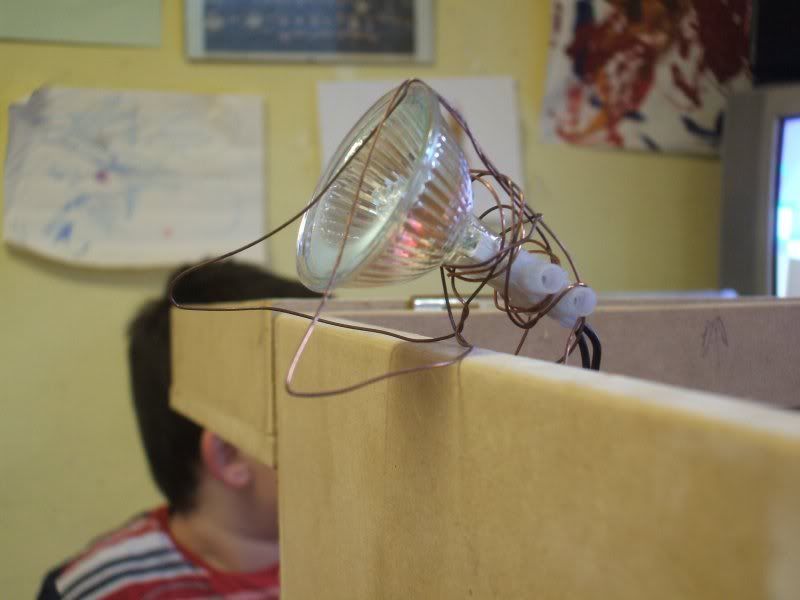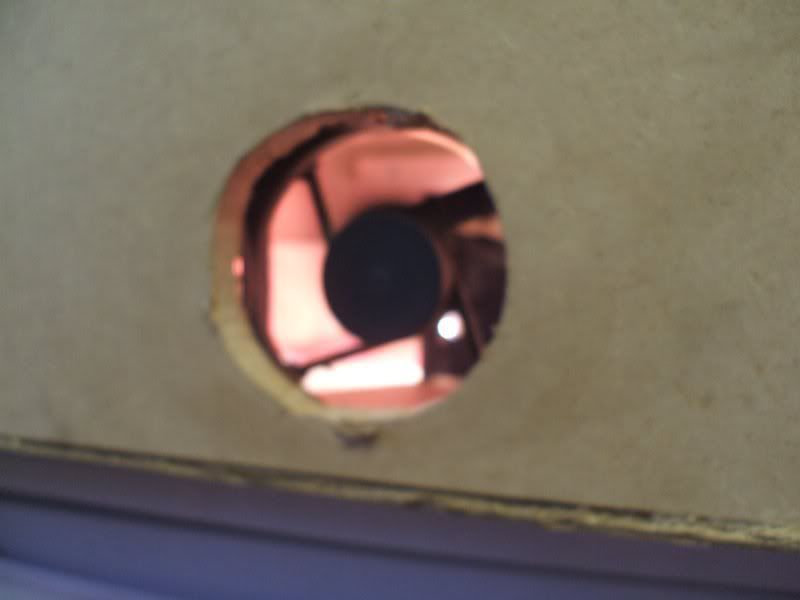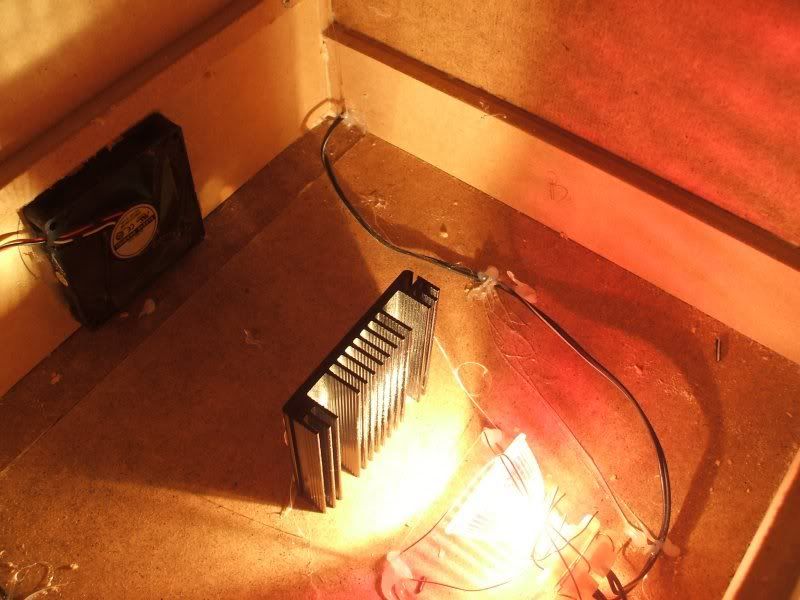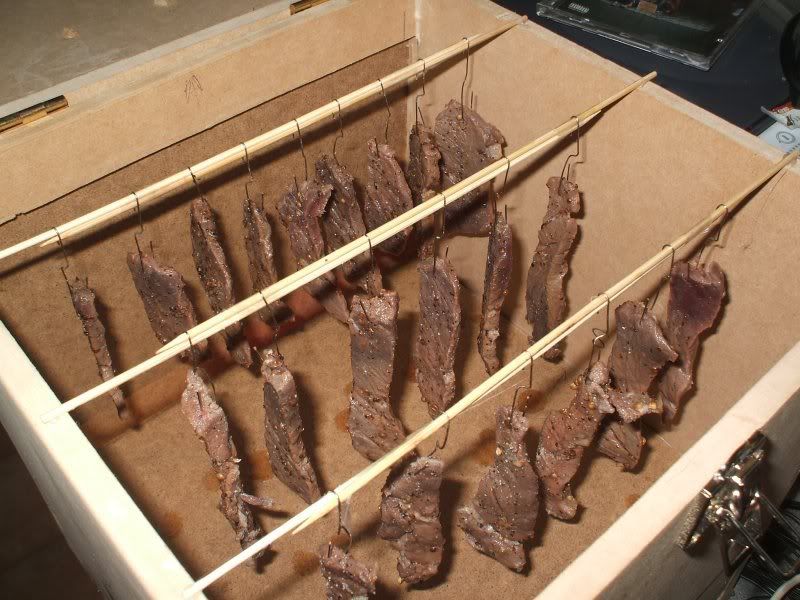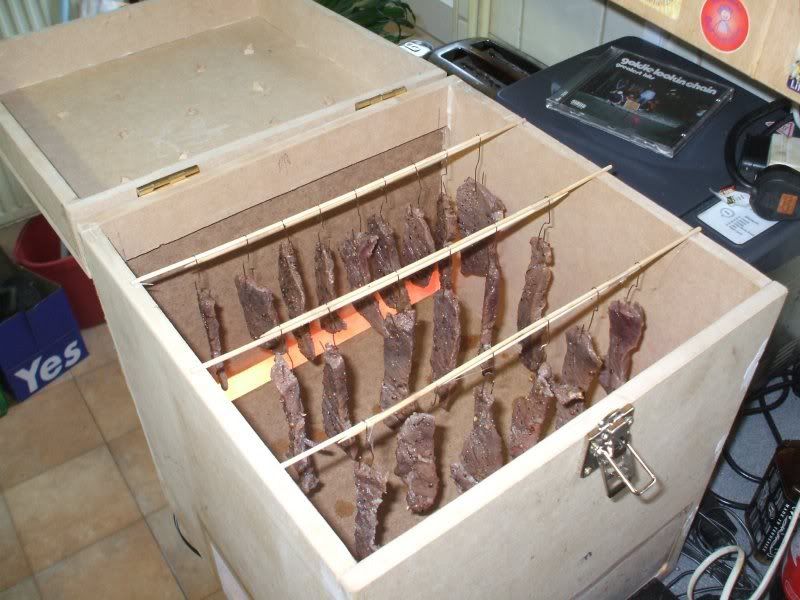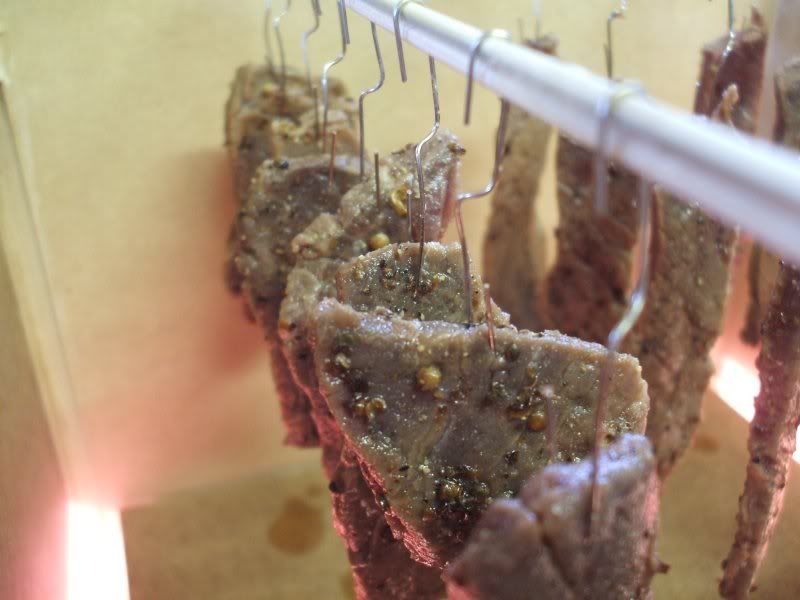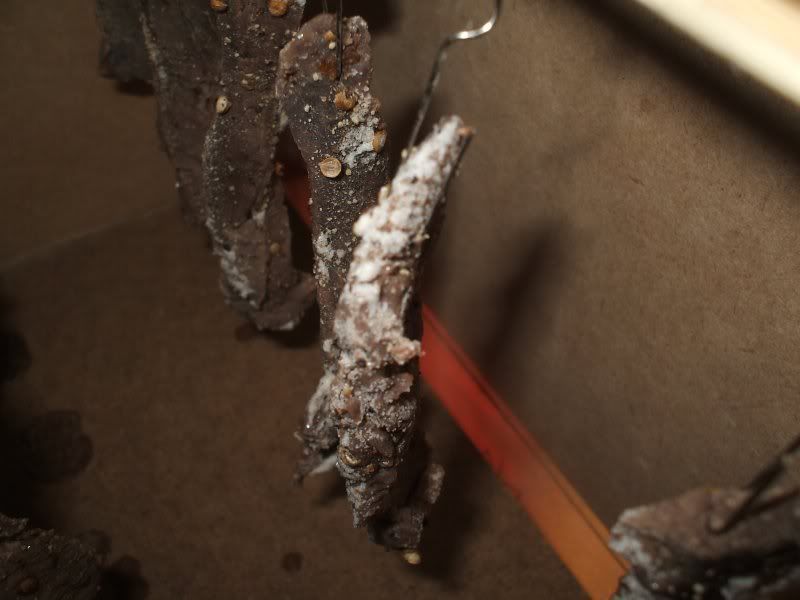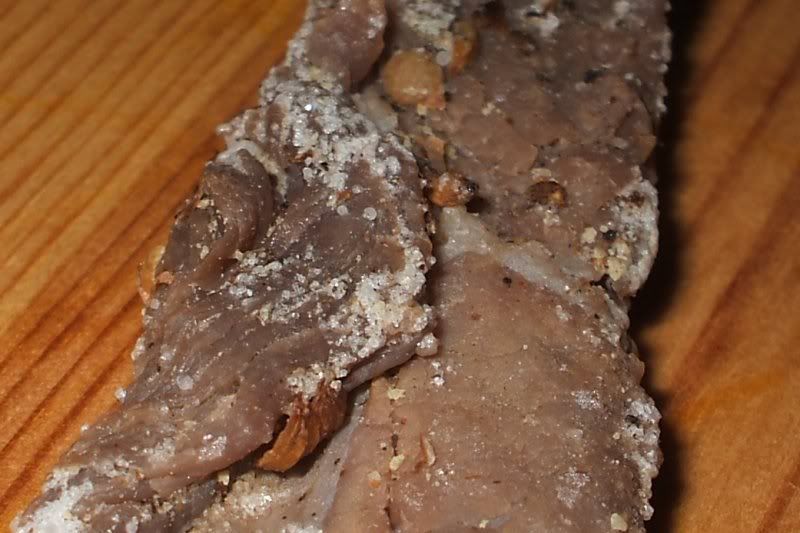Evening all,
Time for some more meet modification
So here is the start of my first jerk setion.
My friends have jerked a few times before, but this is my first time!
I got some topside of beef from the deli counter at Tesco earlier today, 500g of beef for £4.80.
A jerking shack is required, so that needs to be made as well.
I will start with some backgroud info (shamelessly stole from this site.... www.3men.com/biltong.htm#Meat%20Selection)
Now although i refered to this as jerky it, is actually biltong (although it is enssentially the same)
Biltong is South African dried meat. The word comes from Dutch with ‘BIL’ meaning buttock and ‘TONG’ meaning strip. Biltong has been around for centuries; for instance, a more primitive form, the Dutch tassal, was also prepared in certain areas of France during the late Middle Ages. Tassal was also made in Batavia, and made its way to South Africa with the Dutch settlers where it was adapted to the less pungent biltong.
There are typically two main types of biltong – Beef Biltong and Game Biltong. Both are good!
In the past farmers used a whole beef carcass for Biltong, but today the beef buttock - consisting of the silverside (from which 'ronde' or 'predikantsbiltong' and 'regte' biltong are made), topside and thick flank is normally used. The finest biltong is the 'garingbiltong' made from the eye muscles running down both sides of the backbone and which are cut whole from a side of beef. The most tender is the 'binnebiltong' or 'ouma se biltong' (grandmother's biltong) which is made from the fillet.
How to Make Biltong
There are a multitude of recipes and methods used today to make biltong. Many of these are passed down from generation to generation. The good news is that it is really simple to make your own biltong, and the principles which you will use are basically the same regardless of which recipe or method you choose to adopt. One thing is sure, like many other recipes, the best biltong is made with the best ingredients.
Meat Selection
As mentioned above, In the past farmers used a whole beef carcass for Biltong, but today the beef buttock - consisting of the silverside, topside and thick flank is normally used. The finest biltong is made from the eye muscles running down both sides of the backbone and which are cut whole from a side of beef. The most tender (and most expensive) biltong is made from the fillet.
If you live in America, the best cuts I have found to make biltong, include London Broil, Eye of Round and Top Round.
Bottom line: Use the best meat you can afford. The cheaper cuts of meat often contain an excess amount of sinew, collagen and binding tissue which will yield an often tough and ‘stringy’ produce.
Method
The meat must firstly be cut into strips. A few things should be noted at this point:
Meat must be cut with the grain. This is because when you come to eat the final product you will cut the biltong across the grain (and tough tissue), in order to get the most tender pieces.
Meat will shrink by a large amount during the drying process. The more dry you like your biltong the more it will shrink, due to moisture loss from the strips of meat. You can roughly estimate that your end product, will yield approximately 50% of your starting weight.
In cool, dry climates, your initial strips of meat can be cut fairly thick, and of any length. In warm, moist climates, your initial strips of meat should be cut thinner. This is because the thicker the strip of meat, the longer it will take to dry out, and the more likely the meat is to spoil during the drying process.
Try to remove as much sinew and binding tissue as possible when you cut your strips of meat.
The strips of meat are then dipped into undiluted vinegar. Use red, white, or even apple cider vinegar. The vinegar ‘bath’ accomplishes a few things: It dissolves some of the sinew and binding tissue. It makes the meat a little more tender. It mellows the aroma and flavor of the meat, before and during the drying process. It causes the meat to have a dark and shiny appearance once it is dried. It opens up the pores of the raw meat, for the next step, which is to spice the meat. By doing so, the spices are able to penetrate deeper into the meat
Right well that is the end of the shameless steel.
I will now post some pictures up of my progress.
The left overs of the project...
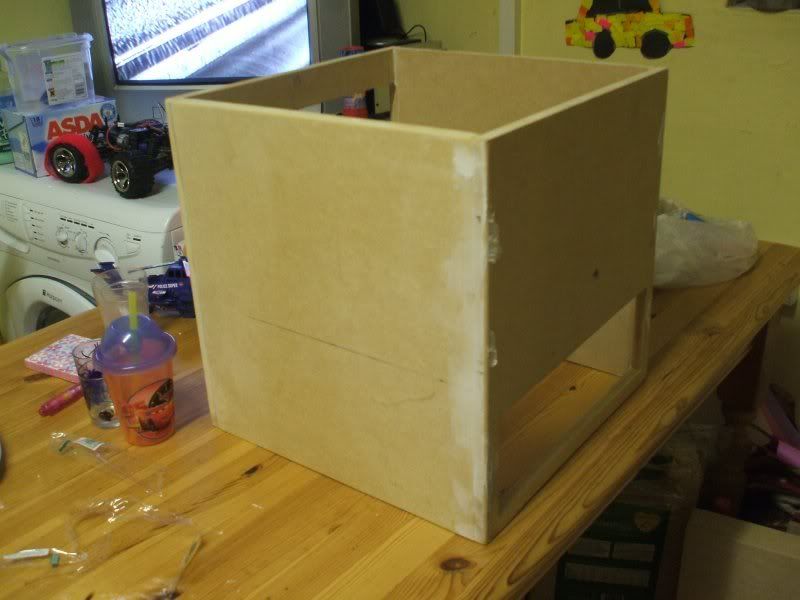
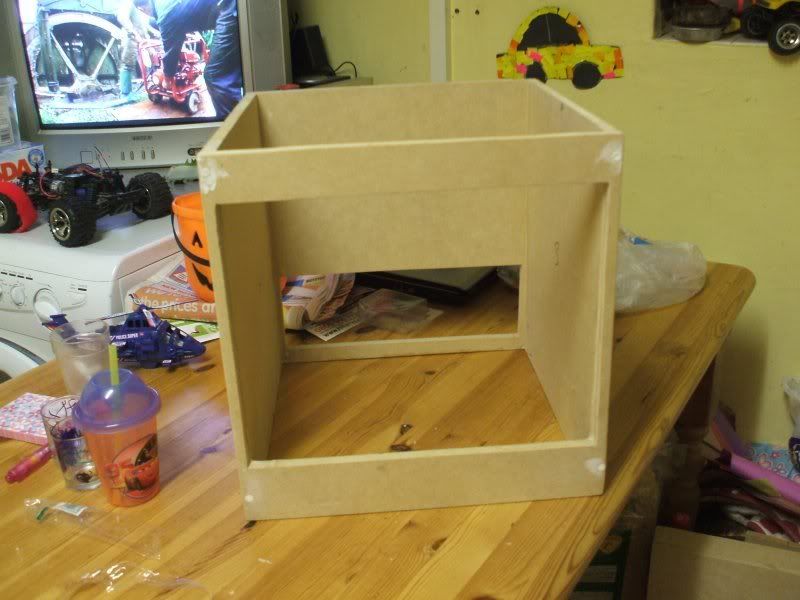
I added some rails to make a compartment that separates the meet from the heat source
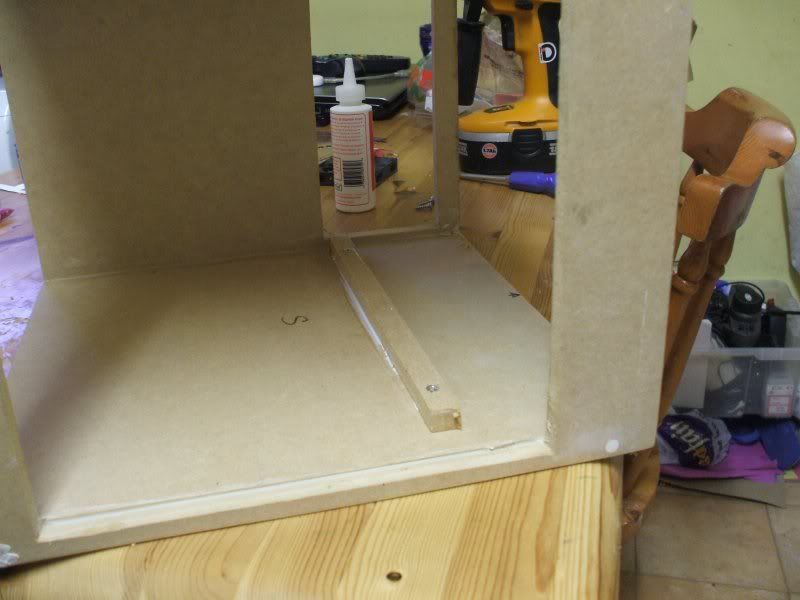

this supports a piece of wood with holes or gaps that separates the upper drying protion from the lower portion that contains a 50 w light buld (and a fan for forced air movement in my case)
a lid added
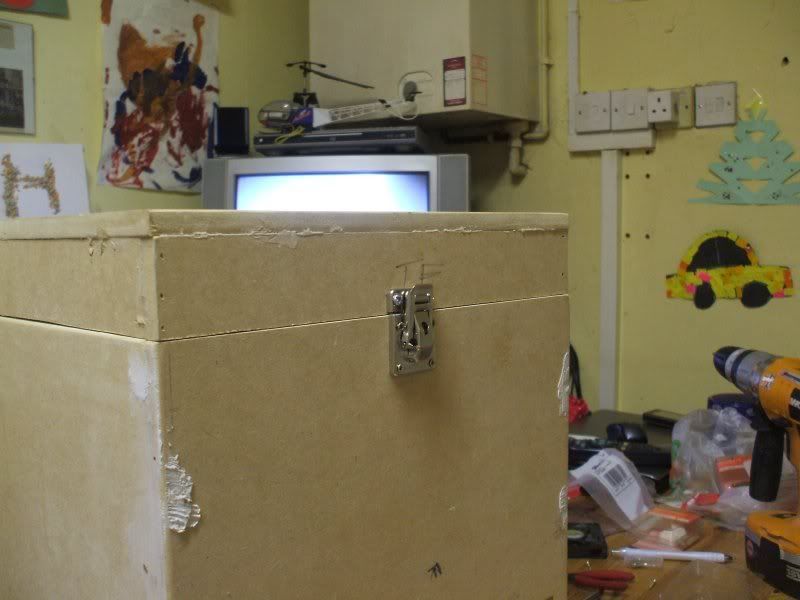
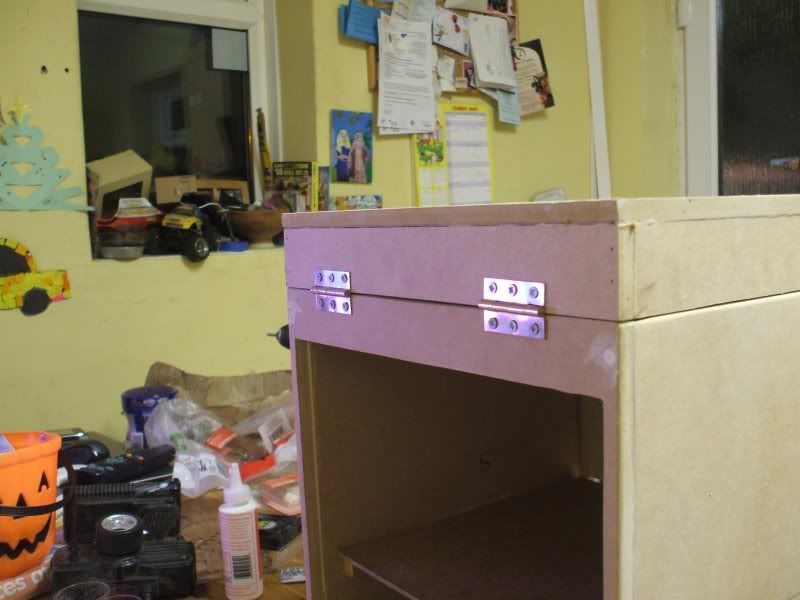
a big hole in the back sealed up
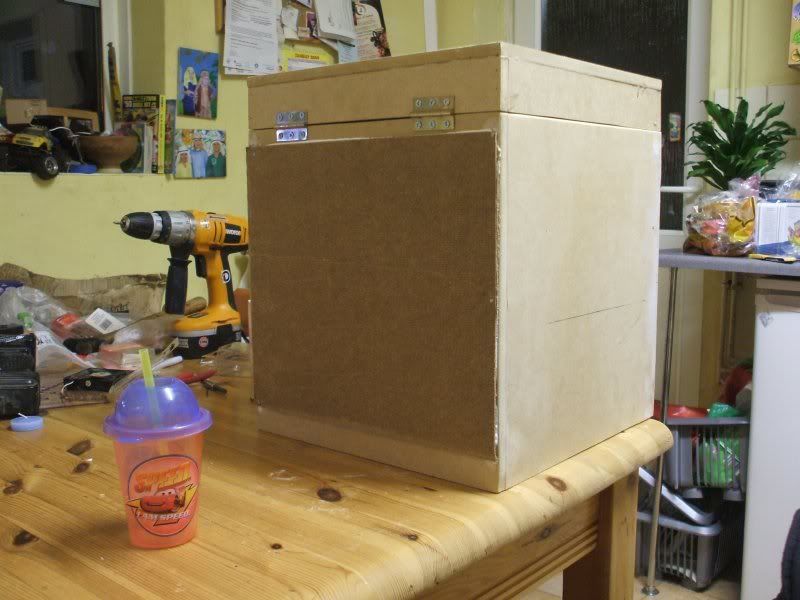
the idea is that you create a slight posative pressure inside with a slightly higher temperature than outside, this causes the moisture to leave the box and dry the meet.
Holes in the top allow air out
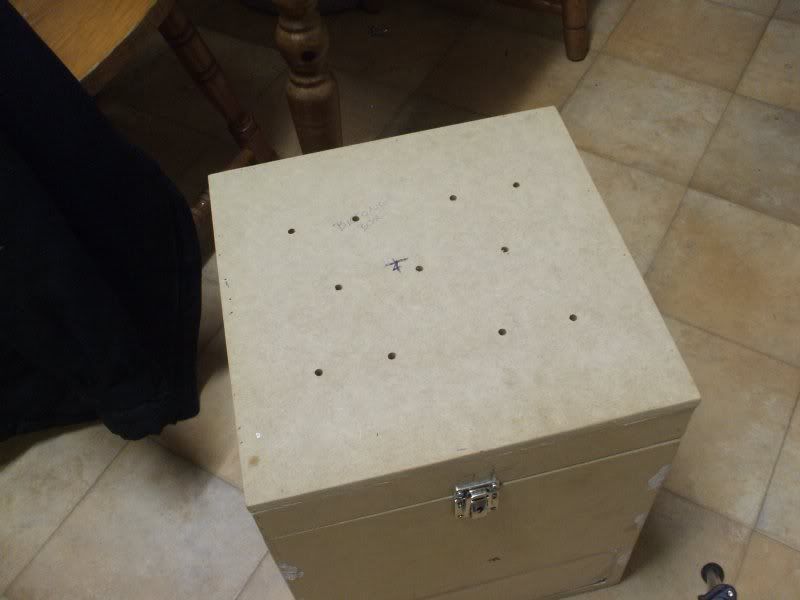
Now for the MEET!
Its 500g of topside obtained from tesco as mentioned above.
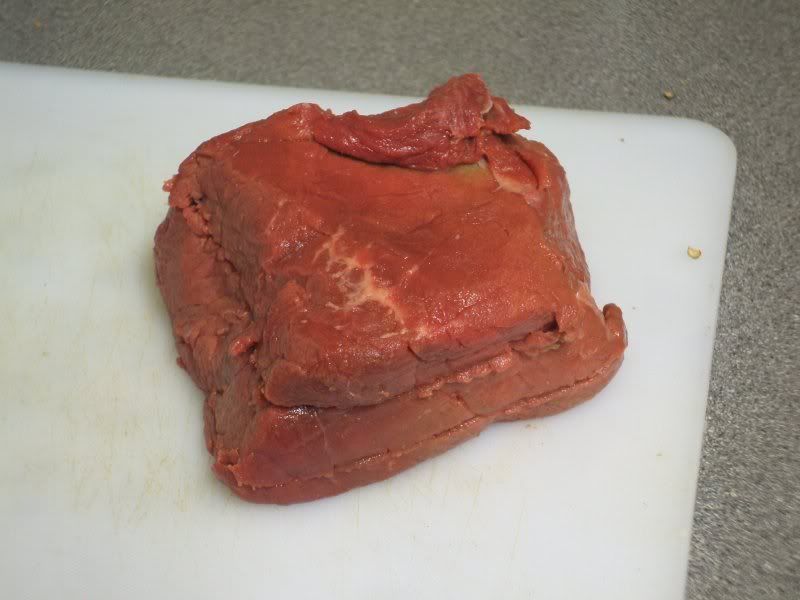
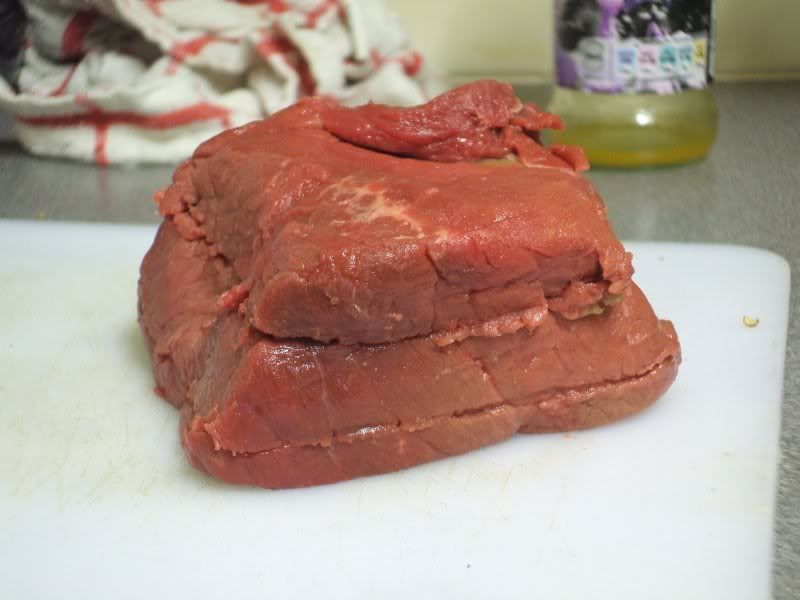
I then sliced the meet..... Note the difference in colour... not totaly happy with the quality of meet, some of it is red and some greyish.. but hell, it will do for the first run
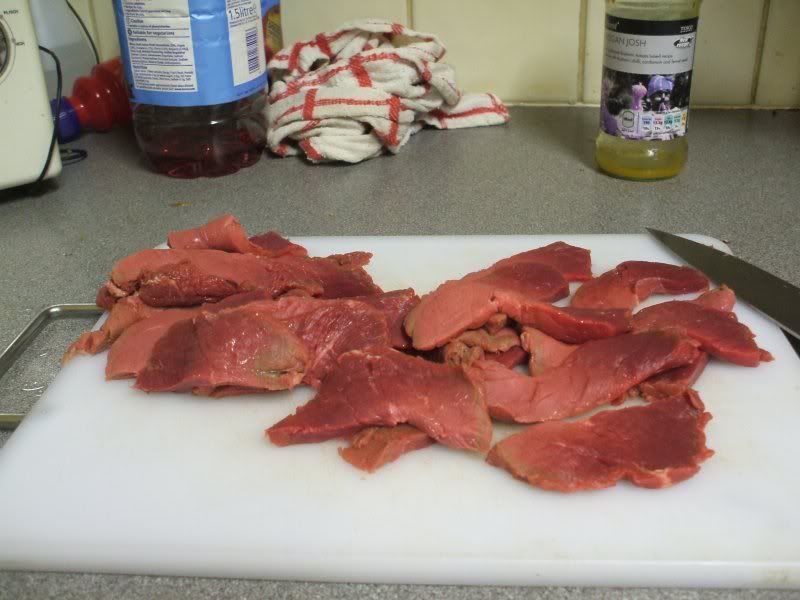
the strips then get dipped in apple cider vinigar
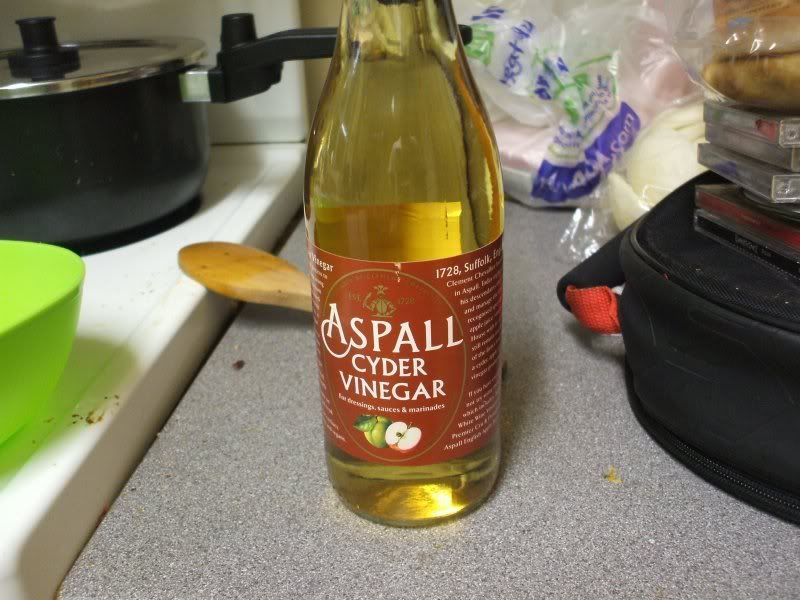
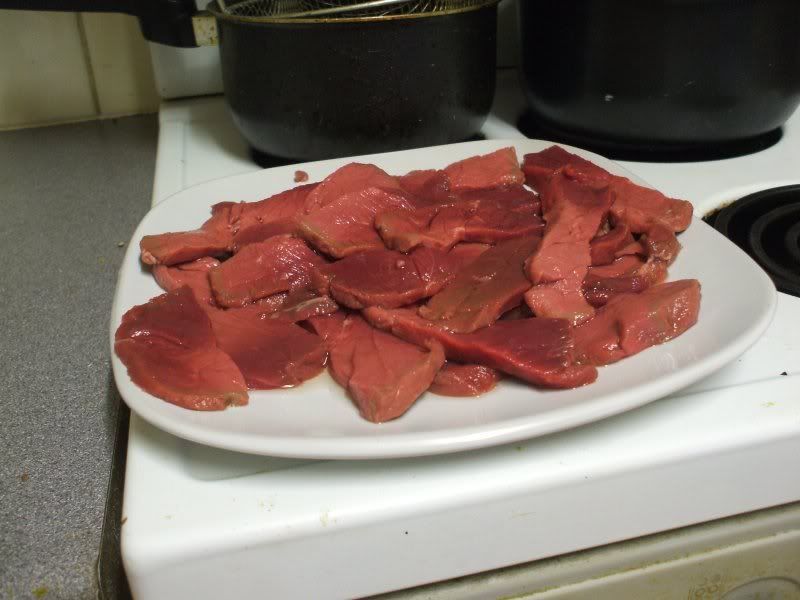
then the rub was made from.....
60 g fine salt
13 ml brown sugar
2.5 ml bicarbonate of soda (helps to make the biltong tender)
2.5 ml ground black pepper
15 ml coarsely ground coriander
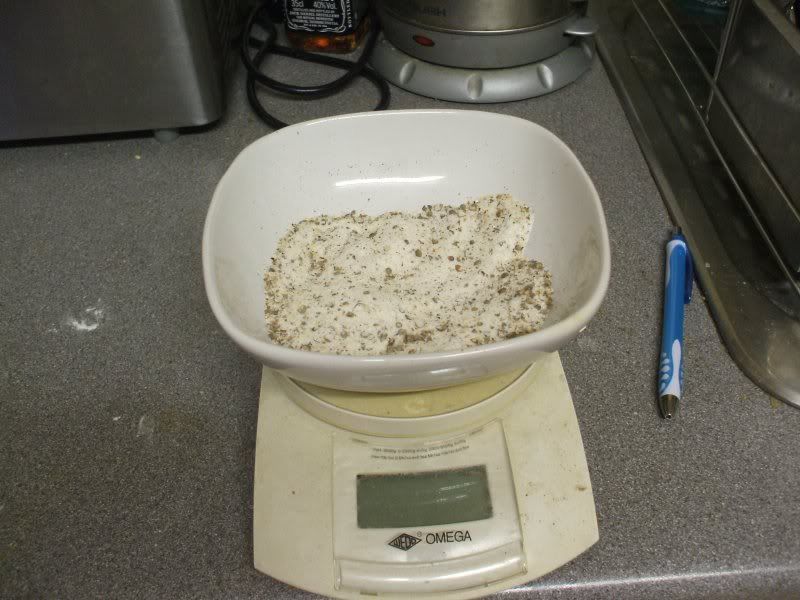
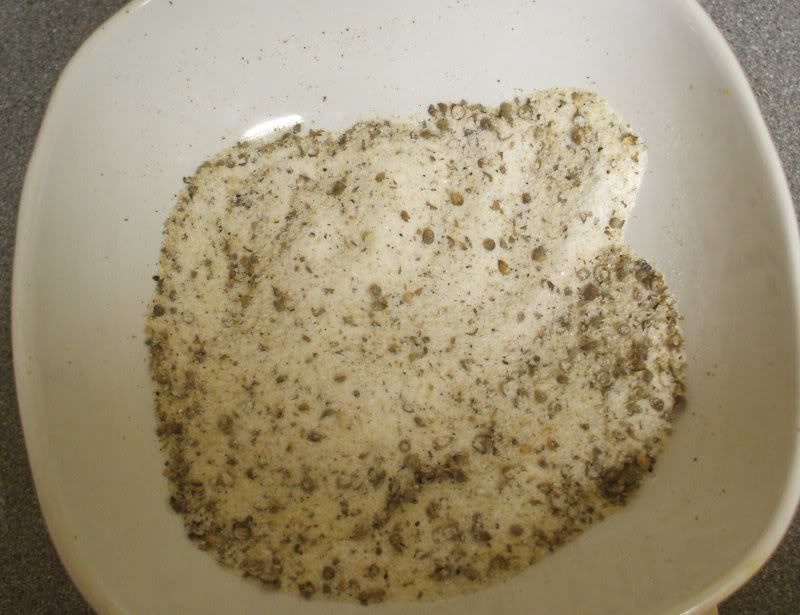
the meet is then coated in the cure/rub
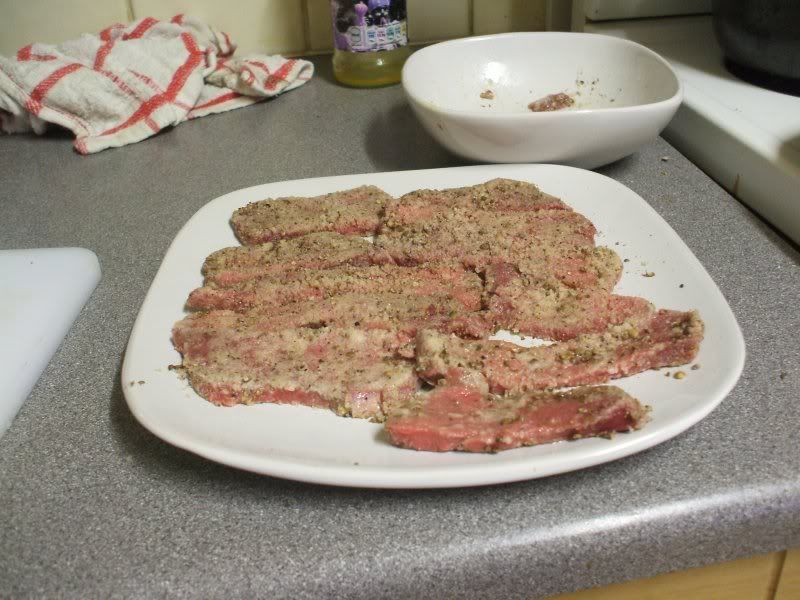
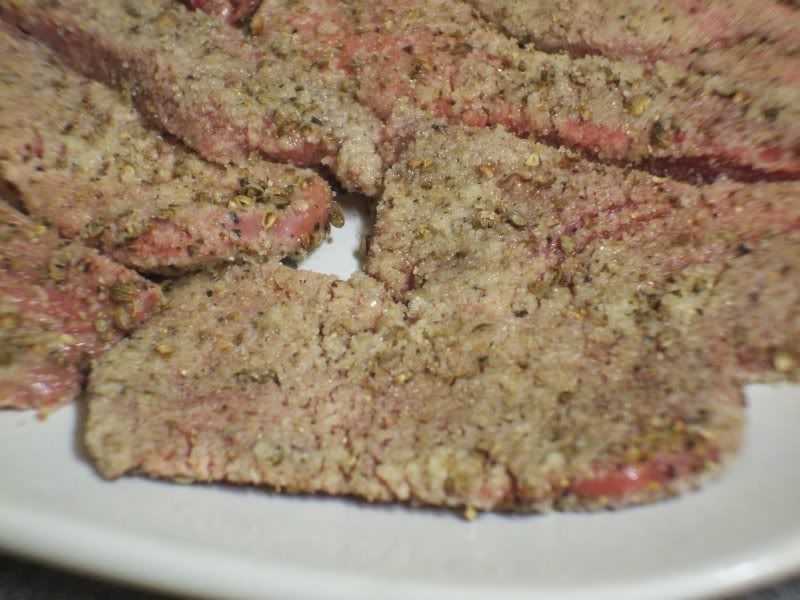
see the liquid coming out of the meet

this then gets put in the fridge for a day to cure
Tomorrow I will put the bulb and a fan into the box (12 volts) and hang the meet!
I am salivating already!!
Lewis
Time for some more meet modification
So here is the start of my first jerk setion.
My friends have jerked a few times before, but this is my first time!
I got some topside of beef from the deli counter at Tesco earlier today, 500g of beef for £4.80.
A jerking shack is required, so that needs to be made as well.
I will start with some backgroud info (shamelessly stole from this site.... www.3men.com/biltong.htm#Meat%20Selection)
Now although i refered to this as jerky it, is actually biltong (although it is enssentially the same)
Biltong is South African dried meat. The word comes from Dutch with ‘BIL’ meaning buttock and ‘TONG’ meaning strip. Biltong has been around for centuries; for instance, a more primitive form, the Dutch tassal, was also prepared in certain areas of France during the late Middle Ages. Tassal was also made in Batavia, and made its way to South Africa with the Dutch settlers where it was adapted to the less pungent biltong.
There are typically two main types of biltong – Beef Biltong and Game Biltong. Both are good!
In the past farmers used a whole beef carcass for Biltong, but today the beef buttock - consisting of the silverside (from which 'ronde' or 'predikantsbiltong' and 'regte' biltong are made), topside and thick flank is normally used. The finest biltong is the 'garingbiltong' made from the eye muscles running down both sides of the backbone and which are cut whole from a side of beef. The most tender is the 'binnebiltong' or 'ouma se biltong' (grandmother's biltong) which is made from the fillet.
How to Make Biltong
There are a multitude of recipes and methods used today to make biltong. Many of these are passed down from generation to generation. The good news is that it is really simple to make your own biltong, and the principles which you will use are basically the same regardless of which recipe or method you choose to adopt. One thing is sure, like many other recipes, the best biltong is made with the best ingredients.
Meat Selection
As mentioned above, In the past farmers used a whole beef carcass for Biltong, but today the beef buttock - consisting of the silverside, topside and thick flank is normally used. The finest biltong is made from the eye muscles running down both sides of the backbone and which are cut whole from a side of beef. The most tender (and most expensive) biltong is made from the fillet.
If you live in America, the best cuts I have found to make biltong, include London Broil, Eye of Round and Top Round.
Bottom line: Use the best meat you can afford. The cheaper cuts of meat often contain an excess amount of sinew, collagen and binding tissue which will yield an often tough and ‘stringy’ produce.
Method
The meat must firstly be cut into strips. A few things should be noted at this point:
Meat must be cut with the grain. This is because when you come to eat the final product you will cut the biltong across the grain (and tough tissue), in order to get the most tender pieces.
Meat will shrink by a large amount during the drying process. The more dry you like your biltong the more it will shrink, due to moisture loss from the strips of meat. You can roughly estimate that your end product, will yield approximately 50% of your starting weight.
In cool, dry climates, your initial strips of meat can be cut fairly thick, and of any length. In warm, moist climates, your initial strips of meat should be cut thinner. This is because the thicker the strip of meat, the longer it will take to dry out, and the more likely the meat is to spoil during the drying process.
Try to remove as much sinew and binding tissue as possible when you cut your strips of meat.
The strips of meat are then dipped into undiluted vinegar. Use red, white, or even apple cider vinegar. The vinegar ‘bath’ accomplishes a few things: It dissolves some of the sinew and binding tissue. It makes the meat a little more tender. It mellows the aroma and flavor of the meat, before and during the drying process. It causes the meat to have a dark and shiny appearance once it is dried. It opens up the pores of the raw meat, for the next step, which is to spice the meat. By doing so, the spices are able to penetrate deeper into the meat
Right well that is the end of the shameless steel.
I will now post some pictures up of my progress.
The left overs of the project...


I added some rails to make a compartment that separates the meet from the heat source


this supports a piece of wood with holes or gaps that separates the upper drying protion from the lower portion that contains a 50 w light buld (and a fan for forced air movement in my case)
a lid added


a big hole in the back sealed up

the idea is that you create a slight posative pressure inside with a slightly higher temperature than outside, this causes the moisture to leave the box and dry the meet.
Holes in the top allow air out

Now for the MEET!
Its 500g of topside obtained from tesco as mentioned above.


I then sliced the meet..... Note the difference in colour... not totaly happy with the quality of meet, some of it is red and some greyish.. but hell, it will do for the first run

the strips then get dipped in apple cider vinigar


then the rub was made from.....
60 g fine salt
13 ml brown sugar
2.5 ml bicarbonate of soda (helps to make the biltong tender)
2.5 ml ground black pepper
15 ml coarsely ground coriander


the meet is then coated in the cure/rub


see the liquid coming out of the meet

this then gets put in the fridge for a day to cure
Tomorrow I will put the bulb and a fan into the box (12 volts) and hang the meet!
I am salivating already!!
Lewis







